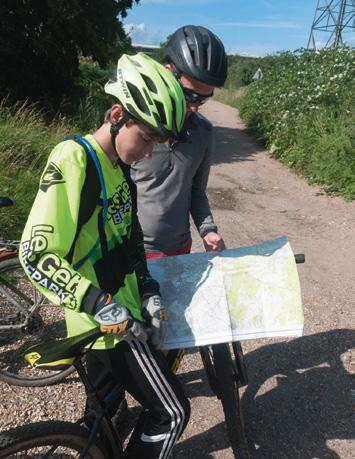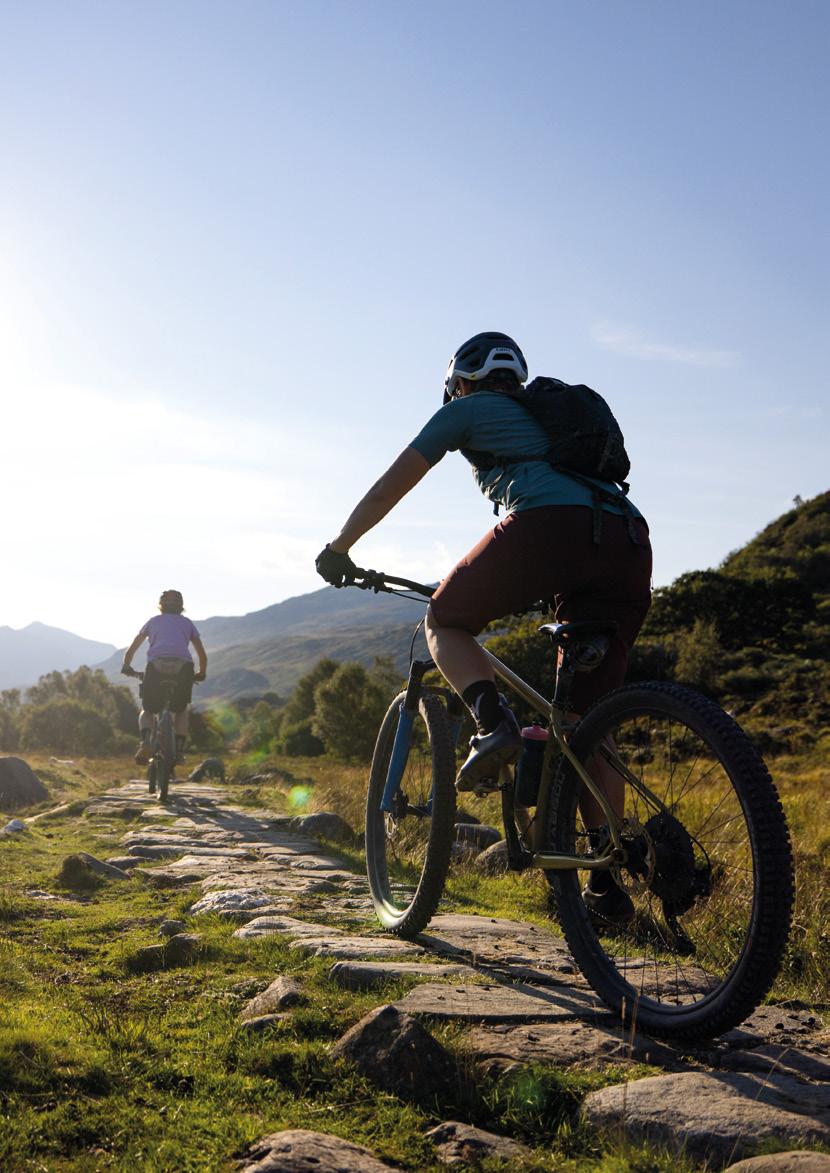4 minute read
Introduction
On 4 April 2019, Welsh Government announced, unequivocally, that it wanted more people to enjoy the countryside and that it was going to help them do it:
“…we are committed as a Government to enabling more people to enjoy our countryside more easily –to take advantage of the many health and wellbeing benefits that getting outside can bring.
“An accessible countryside supports our efforts to boost Wales as a tourism destination and a magnet for walkers, cyclists and thrill-seekers.”
Hannah Blythyn MS, then Deputy Minister for Housing & Local Government, 4 April
20191
The motivations behind this vision – health, well-being and tourism – came as no surprise, tallying perfectly with the economic, social, environmental and cultural goals of the Well-being of Future Generations (Wales) Act 2015.
The Minister’s resolve to reform countryside access did not come out of the blue either. Welsh Government had already surveyed public opinion twice, and the majority loved the idea:
• In 2015, the Government consulted on ‘Improving Opportunities to Access the Outdoors for Responsible Recreation’. Most of the 5,796 respondents said that, yes, they wanted more people to engage with the outdoors and nature in Wales.2
• About 70% supported Cycling UK’s (then CTC) and OpenMTB’s ‘Trails for Wales’ campaign, calling for radical reform to public access.3
• In 2017, the Government picked up the access thread once more and consulted the public on managing the country’s natural resources sustainably.4 Its proposal to enable cycling and horse riding on footpaths under the same conditions as those provided for cycling on bridleways under the Countryside Act 1968, s.30, attracted nearly 14,000 responses, the vast majority in favour (86%). Over half (7,375) were again inspired by our ‘Trails for Wales’ campaign.
By April 2019, Welsh Government had all the support it needed for its visionary changes to progress from concept to reality.
Recognising that “The complex nature of the existing legislation has been one of the triggers for reform”, the Minister commissioned an Access Reform Advisory Group (ARAG) to consider in detail “how the more significant changes to access rights should be implemented and the simplification of the recording, planning and changing of public access.”
ARAG’s remit included looking at how to implement the following proposals:
• Multi-use paths (allowing cycling and horse riding on footpaths); and
• Reducing the restrictions associated with open access land.
The latter proposal was accompanied by this unambiguous statement: “We will lift the restrictions on cycling and horse riding, hang-gliding and para-gliding, bathing or using a vessel or sailboard on natural bodies of water.”5
If all the above weren’t ample grounds to believe that change was definitely on the way, and soon, in June 2021 the Programme for Government set well-being objectives for the next five years on healthcare, inequality, a greener economy, the nature emergency and tourism, all of which are complementary drivers for access reform.6
Yet Natural Resources Wales’ (NRW) reflections on ARAG’s discussions, appearing as a ‘Final Advice Report’7 in November 2021, can only be described as a dampener. Rather than making clear-cut recommendations, the report focussed merely on options, in effect watering down the Government’s bold and inviting vision of 2019.8
Both Cycling UK and OpenMTB, not to mention the thousands of people who’d supported our Trails for Wales campaign, found this deeply frustrating.
We’d sent representatives to all three of ARAG’s expert groups, advocating two changes to make it decidedly easier for people to enjoy the countryside actively by cycle:
• Lifting cycling restrictions on most footpaths by default, unless unsuitable (as opposed to the cumbersome and inefficient case-by-case process still in use today); and
• Allowing additional activities, including cycling, on all access land designated under the Countryside and Rights of Way Act (CRoW) 2000 (as opposed only to specific areas or linear corridors).

Trails for Wales: We can’t afford to wait cyclinguk.org

As the findings of Cycling UK’s ‘Rides of Way’ survey suggest, opening up suitable footpaths is likely to transform cyclists’ experience of the countryside. Of the ten thousand plus respondents from across Britain:

• Seven in ten said they could enjoy a greater variety of routes.
• Around two-thirds could “make better routes” and avoid busy roads.
• Almost half could ride more from home, and 37% ride more overall.9
And these were people who knew exactly what they were talking about, being mostly long-term, practised off-road riders, spending a good number of hours out on their bikes each week. Their knowledge of the difficulties and thoughts on how to overcome them could help inform improvements for all sorts of other riders, local or otherwise – families, children, and people with anything from a handcycle to a gravel bike.
But, of course, it isn’t just cyclists and cycling that would benefit from a more open countryside. Wales itself could reap significant rewards because active recreation is so good for public health and well-being, while revenue from outdoor tourism lifts the economy.
Again, this is no revelation for the Government. As far back as 2005, ‘Climbing Higher’, the Welsh physical activity strategy, said that CRoW:
“…opens up large areas of Wales for public access, the combined area of open country and registered common land in Wales is about 360,000 hectares, or about 20% of the land area of Wales. This offers significant opportunities for more active recreation in the countryside, as well as associated health, business and education opportunities.”10 government waits any longer.
And, fourteen years later on 4 April 2019, the Minister said Welsh Government wanted to open up the countryside much further for much the same reasons.
Regrettably, though, NRW’s ‘Final Access Report’ of November 2021 left the final decisions on visionary reforms hanging.
Since then, nothing has happened. No progress. No decisions. It’s been ready, steady but no go.



